social choice midterm
1/20
There's no tags or description
Looks like no tags are added yet.
Name | Mastery | Learn | Test | Matching | Spaced |
|---|
No study sessions yet.
21 Terms
Plurality Method
method that selects a winner based on whichever
candidate received the highest number of (first choice) votes.
majority candidate
one who is placed first by more than half the voters
has plurality, would be a Condorcet
Spoilers (overall)
Candidates that wouldn’t win and affect the vote for other candidates
(or: candidates excluded from a runoff election)

Runoff election
Secondary election off of a plurality election with two leading candidates
Elimination method
(4+ candidates, works for multiple rounds, one candidate eliminated each round, lowest vote-getter, ends up with last two or a majority)
Reduced preference schedule
Summarizes/combines preferences by number of ballots with same rankings, helps to find answers to different questions about the results
Make scompact all the information you have, compress voters who vote the exact same way
Works with the Principle of One Person, One Vote
Principle of one person, one vote
If the outcome of an election method only depends on the reduced preference schedule (RPS), then we say it satisfies the principle of one person one vote
Borda Score method
Uses Borda Points (i.e. 4 possible candidates, 4 points per preference ballot if ranked first on the ballot, 3 points if ranked second, etc.)
Relies on reduced pref. schedules, averages relative rank among all voters
Satisfies OPOV principle
However many candidates there are = # of points for first place
Candidate with greatest Borda score wins
pairwise comparison graph
Draw line from winner to loser (arrow away means that candidate won)
Represents societal preferences, candidates score points based on the number of candidates they would beat head to head
Greatest possible number of head to head battles a candidate can win in the PWC is 1 less than the number of candidates
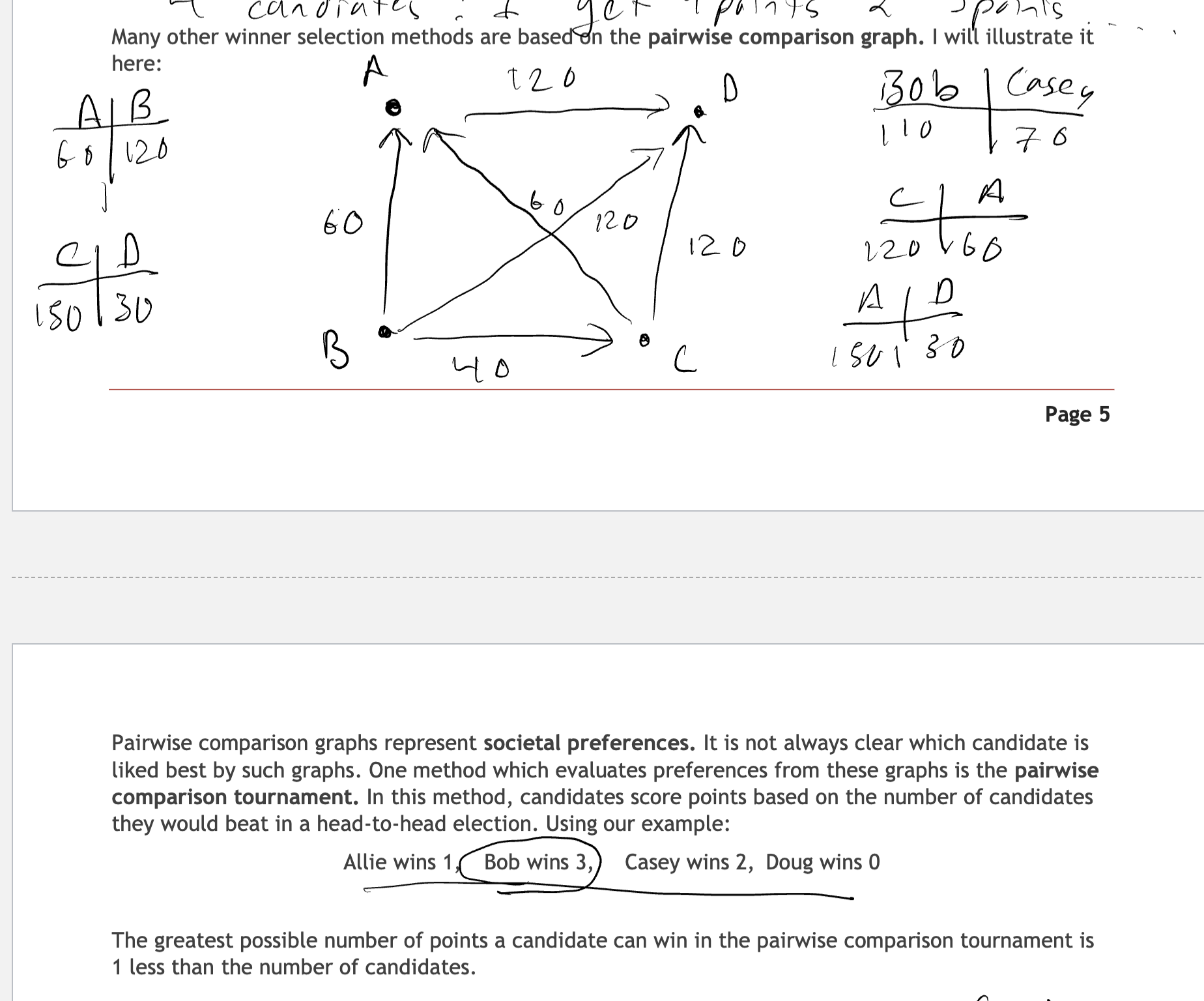
Condorcet candidate
a candidate that would win a head-to-head
competition against any/every other candidate
(comparison between the only themselves and one other candidate for highest number of votes)
majority candidate is the Condorcet, you can have CC without plurality
there can only be one CC!
majority fair criterion
IIf a winner selection method would always choose only the majority winner (if there is one), then such a method is considered majority fair
Majority is not the same as plurality – majority is if you have more than 50% of the vote
Condorcet fair implies majority fair (not reversible)
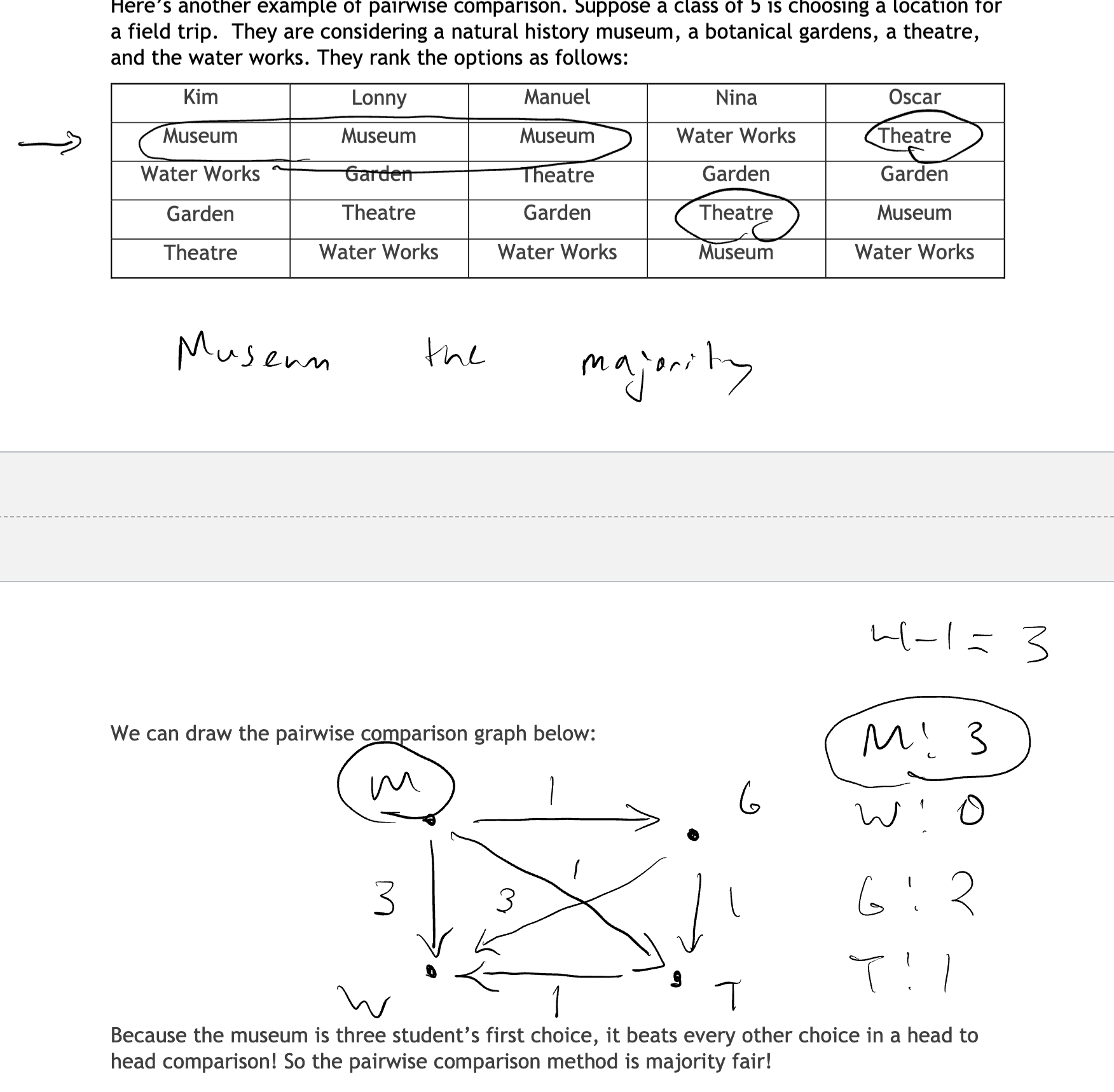
majority fair methods
plurality — if a candidate gets a majority of the votes, they are the plurality winner
elimination
runoff — both need majority, left with majority winner
pairwise comparison — majority candidate would win every head to head
NOT BORDA SCORE
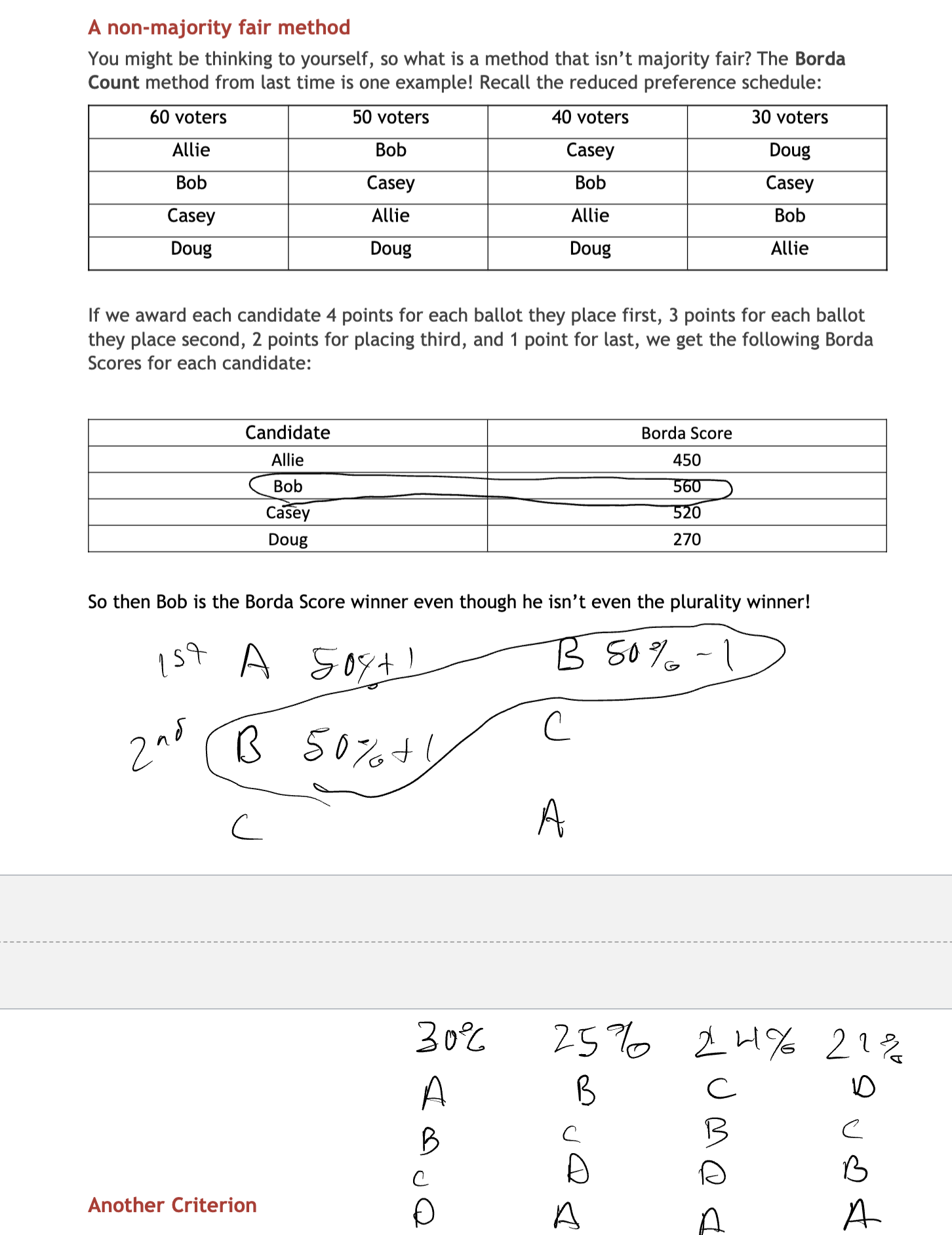
Condorcet-fair criterion
A winner selection method satisfies the Condorcet criterion if it makes any Condorcet candidate—if there is one—the sole winner.
more strict than majority criterion (CF is MF, not vice versa)
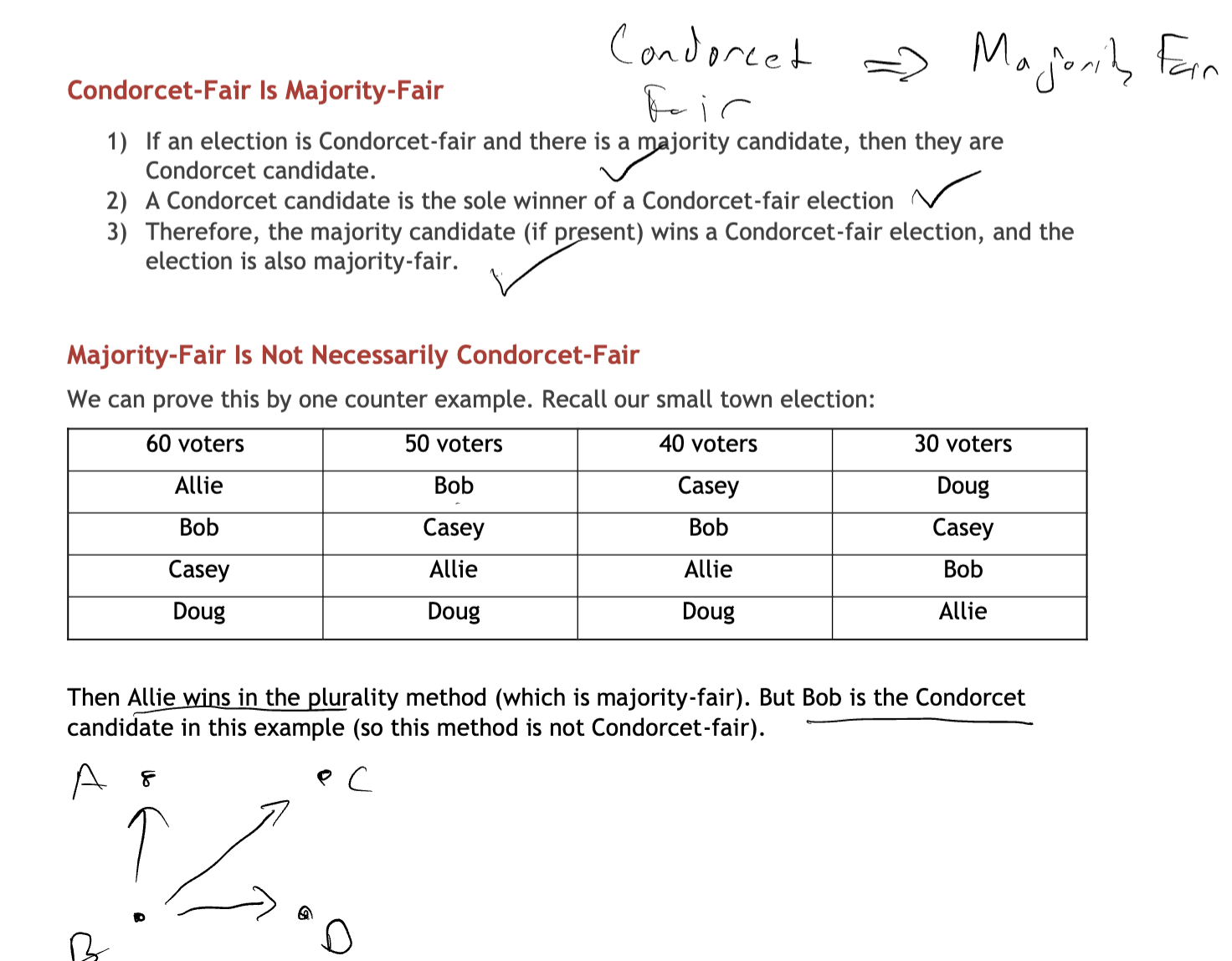
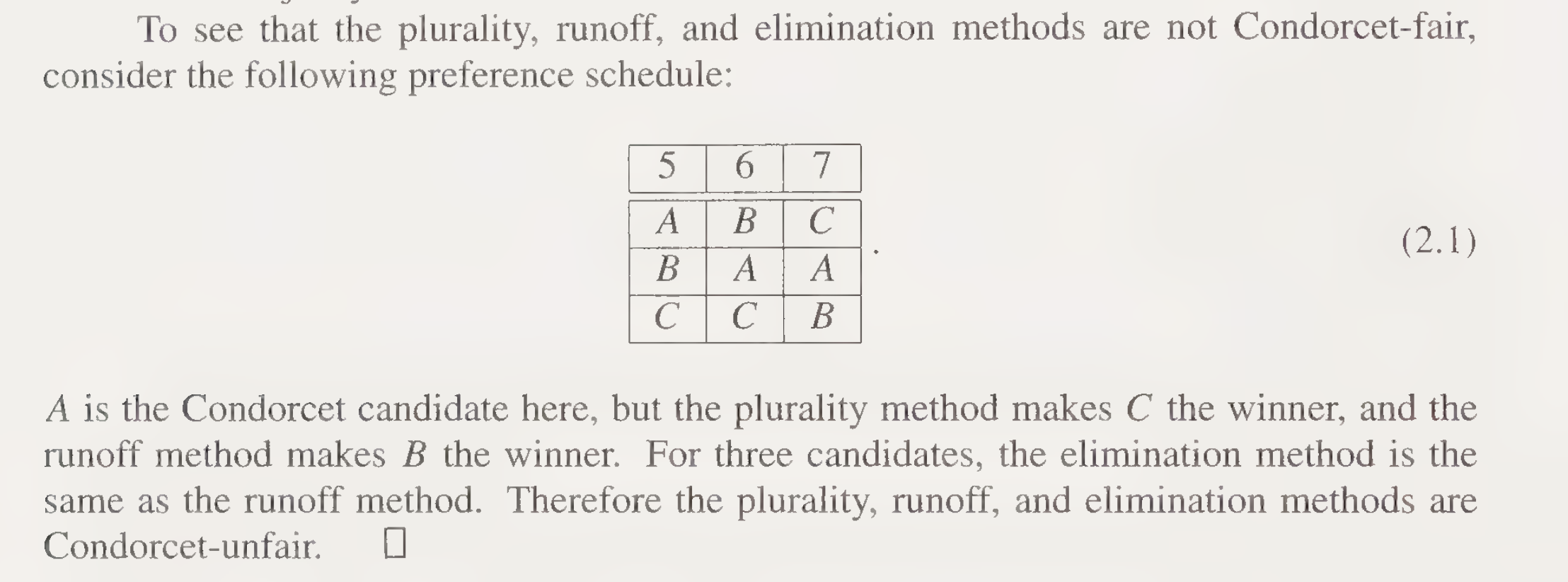
Condorcet fair methods
pairwise comparison — shows the Condorcet candidate, would win every head to head
NOT PLURALITY, RUNOFF, ELIMINATION (majority but not condorcet fair), BORDA
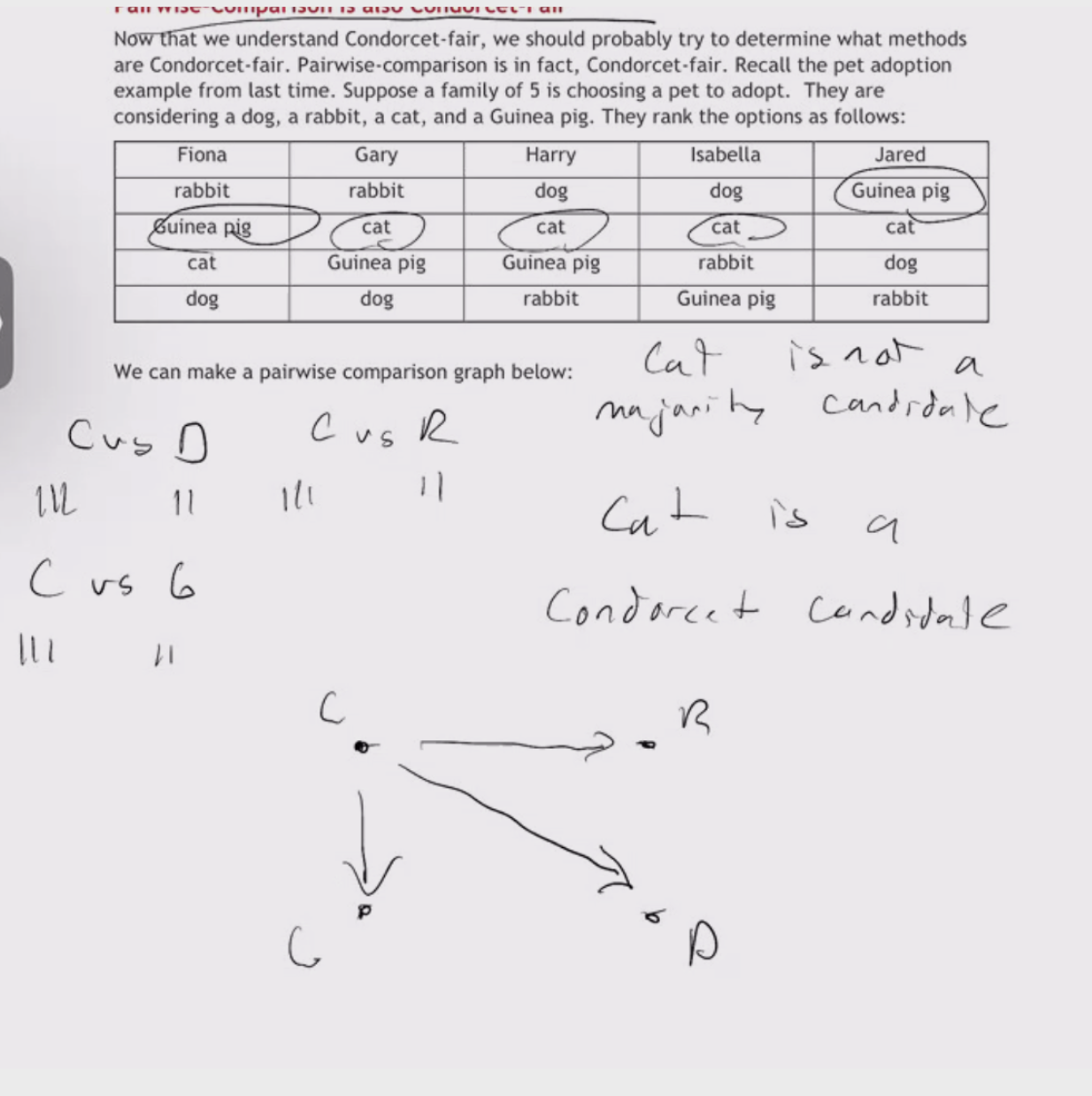
Circular Collective Preferences
No Condorcet — when there is no CC, societal preferences work circularly and no candidate wins universally over the others

the unanimity criterion
A winner selection method satisfies the unanimity criterion if it guarantees that candidate Y is not among the winners of the election if there is a candidate X who is preferred to Y by every voter.
if everyone hates one candidate and they are always ranked below another candidate, the mega loser should never win
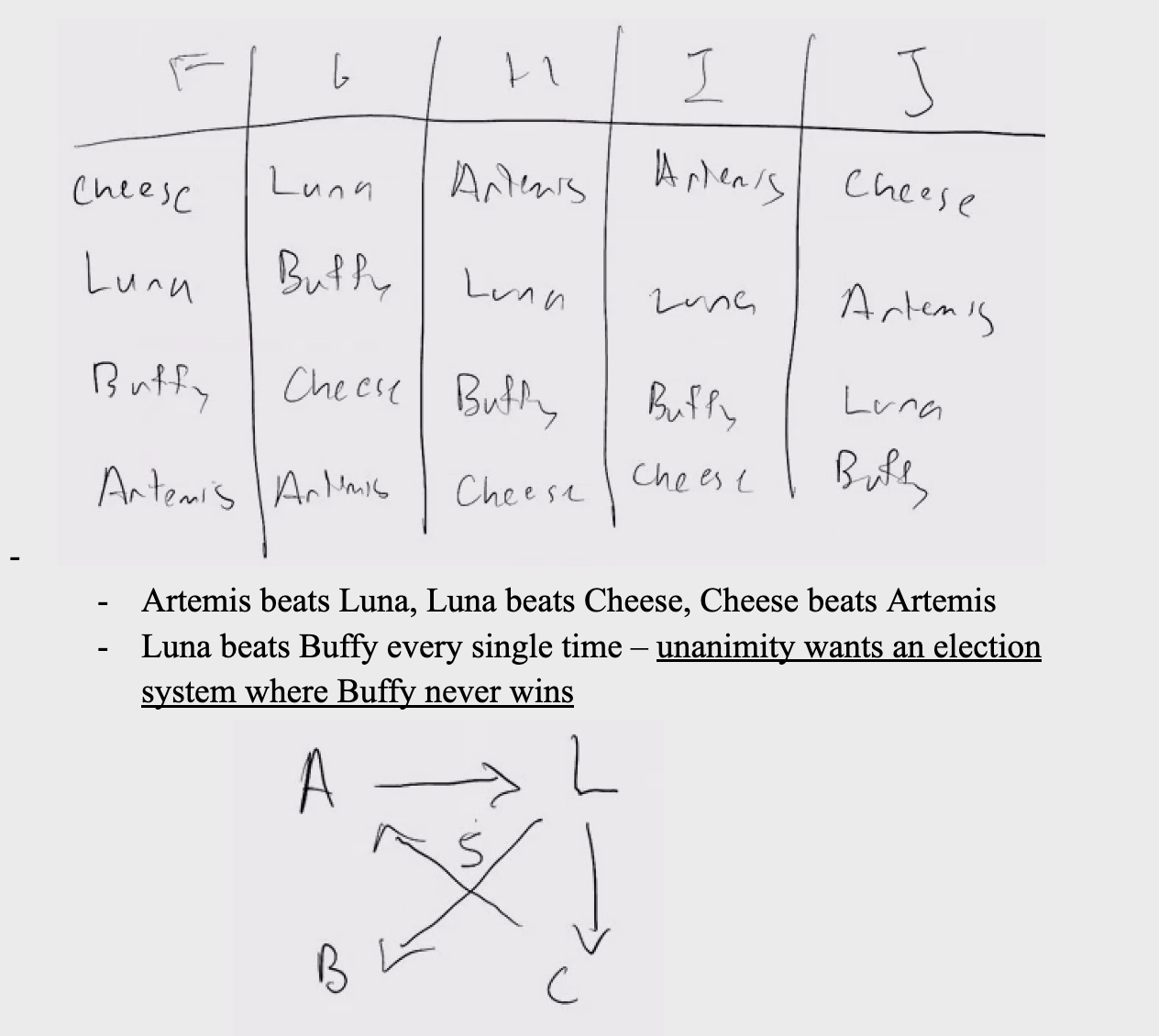
Unanimity fair methods
plurality
runoff
elimination
Borda Score
Pairwise comparison
NOT SEQUENTIAL COMPARISON
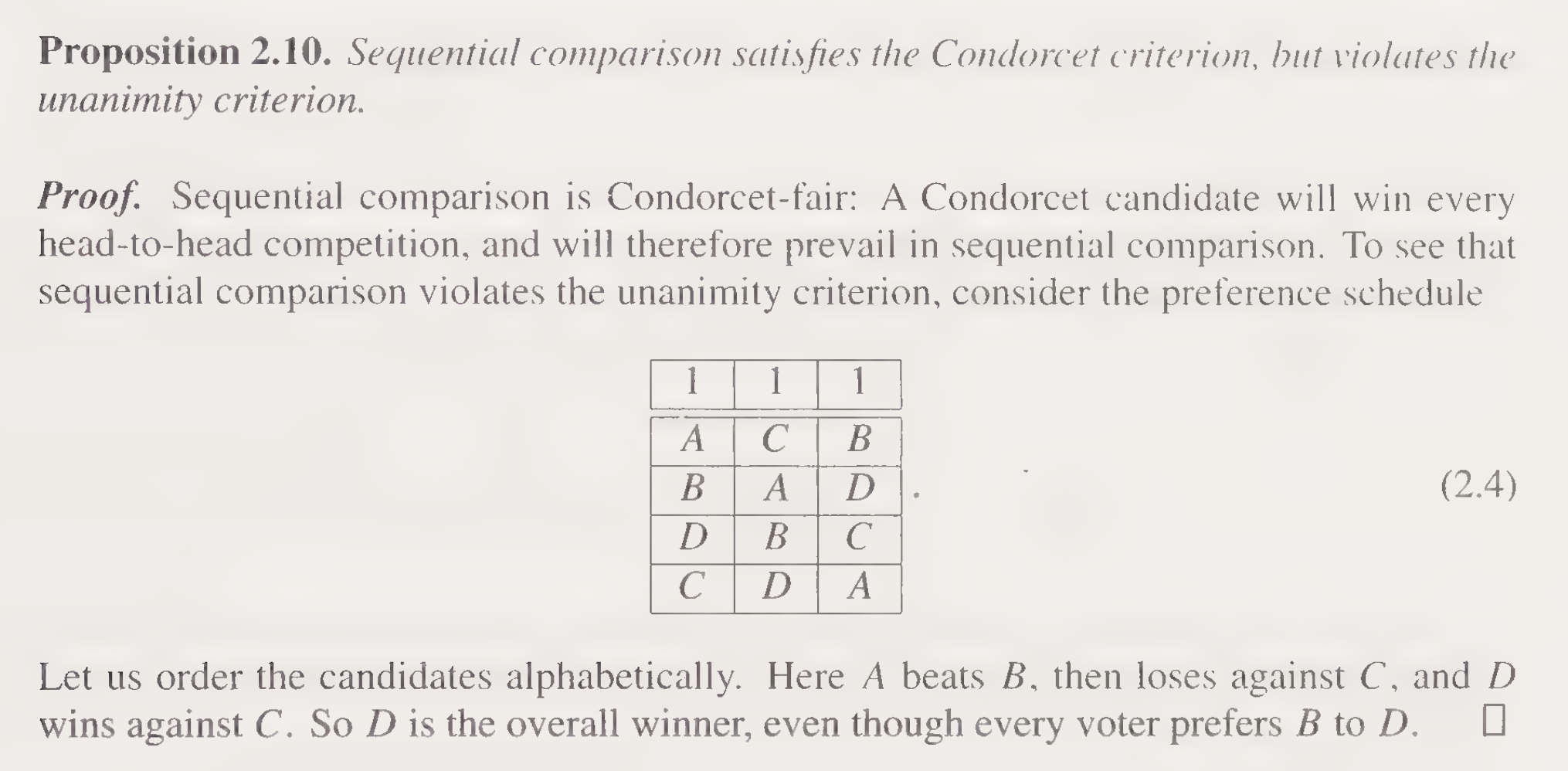
Sequential comparison
does not satisfy unanimity criterion, but is Condorcet-fair
Like a bracket – two candidates go head to head, one gets eliminated and the other moves on to the next round
Very unstable method – could get vastly different outcomes depending on which pair you start with
The Independence of Candidate Name principle
For sequential comparison – the first two choices change the outcome, which we do not want
An election that is not affected by order satisfies the ICNP (independent of candidate name) – created to fix the variability of the sequential comparison
If Candidate X joins the ballot right before the election, Candidate X is not a spoiler if and only if:
Candidate X wins the election
(WA = X)
Candidate X joins the set of winners, in a system with multiple winners (this winners’ set is otherwise the same as before)
(WA = WB U X)
The set of winners is unaffected by Candidate X
(WB = WA)
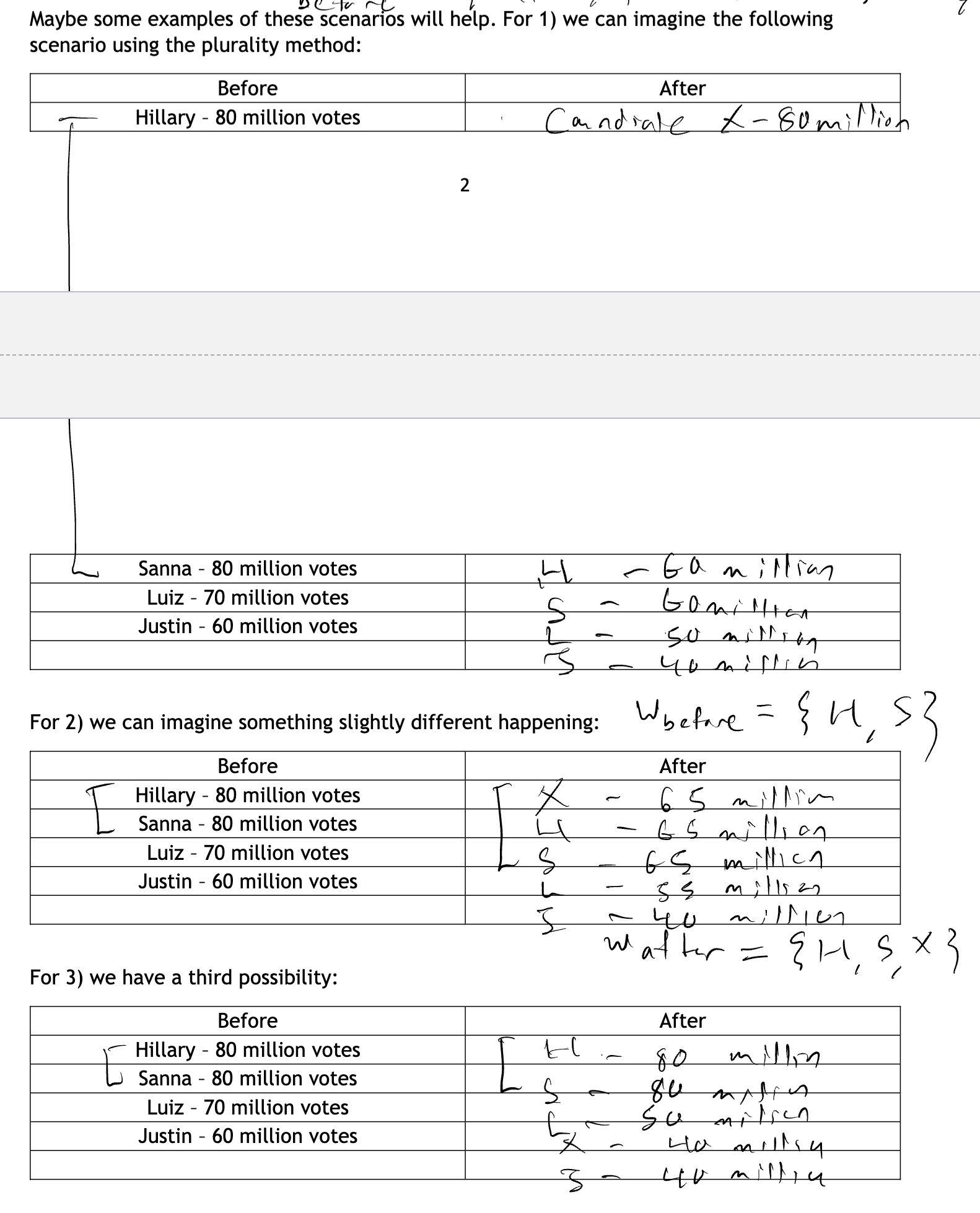
No spoiler criterion
A method satisfies this criterion if:
In the case of a new candidate being added to the ballot, it guarantees the only possibilities are:
the new candidate wins (avoids losing spoilers)
the new candidate joins the set of winners (avoids winning spoilers)
or the new candidate does not change the set of winners from before (avoids losing spoilers)